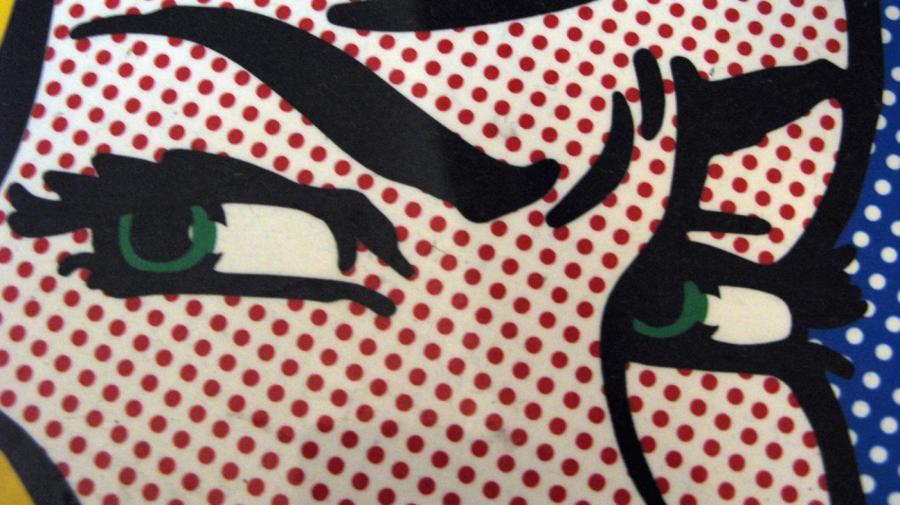What Influenced Pop Art?

Pop Art was a visual art movement that began in the 1950s and was influenced by popular mass culture drawn from television, movies, advertisements and comic books. The consumer boom of the 1950s and the general sense of optimism throughout the culture influenced the work of pop artists. As more products were mass-marketed and advertised, artists began creating art from the symbols and images found in the media.
Pop Art stemmed as a reaction to the Abstract Expressionist movement, which attempted to show feelings and emotions through large, rapidly painted gestural works. According to artist Charles Moffat, Jasper Johns and Robert Rauschenberg led the American Pop Art movement, employing images of popular culture that targeted a broader audience. These images often emphasized kitsch items recognizable to the masses. The work was characterized by clear lines, sharp paintwork and the clear representation of symbols, people and objects. This art movement coincided with the globalization of pop music and a youthful culture, drawing upon musical artists, such as Elvis and The Beatles, and representing them in art.
Jasper Johns was inspired by many ideas from the Dada movement. He took from artist Marcel Duchamp his idea of readymades, or found objects. Rather than found objects, Johns used found images, such as flags, targets, letters and numbers. Johns found these familiar subjects to be immediately recognizable to the audience but neutral enough that he could explore the visual and physical qualities of his medium on many levels.
Robert Rauschenberg combined found images with other real objects. He worked in collage form, using materials he found in his neighborhood with collage and painting. He developed the process of combining oil painting with silkscreen, which allowed him to experiment with images he found in newspapers, magazines, television and film. Rauschenberg was then able to reproduce these images in different sizes and colors and as elements on canvases or in print. His work emphasized the mass-media, production and consumerism that bombarded the public on a daily basis through advertising and marketing, relating them to one’s own individual experience and understanding.





